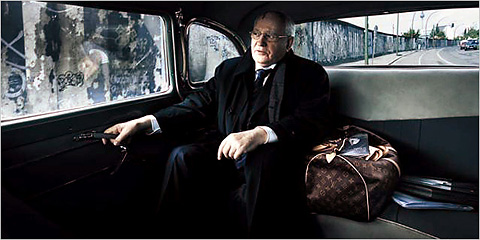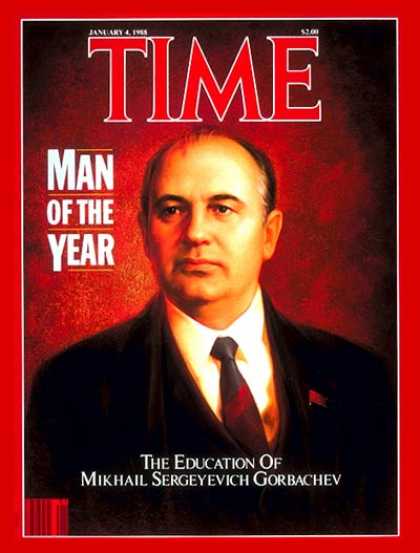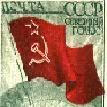|
Wednesday, February 10, 2010 @ 7:45 PM
Video on Cuban Missile Crisis
|
|

|
@ 7:32 PM
Cuban Missile Crisis Introduction
The Cuban Missile Crisis was a confrontation between the United States, the Soviet Union, and Cuba in October 1964, during the Cold War). In September 1964, the Cuban and Soviet governments placed nuclear missiles in Cuba. When United States military intelligence discovered the weapons, the U.S. government sought to do all it could to ensure the removal of the missiles. The crisis ranks as one of the major confrontations of the Cold War, and is generally regarded as the moment in which the Cold War came closest to a nuclear war.The tensions were at their height on 27 October 1962, which was known as "Black Saturday". On 14 October, United States reconnaissance observed (with a US Navy F-8 Crusader) missile bases being built in Cuba. The crisis ended two weeks later on October 28, 1962, when President John F. Kennedy and the United Nations Secretary-General U Thant reached an agreement with the Soviets to dismantle the missiles in exchange for a no-invasion agreement.
The Americans feared the Soviet expansion of Stalinism, but for a Latin American country to ally openly with the USSR was regarded as unacceptable, given the Russo-American enmity since the end of the Second World War in 1945. Such an involvement would also directly defy the Monroe Doctrine, a United States policy which held that European powers should not interfere with states in the Western Hemisphere.
In September 1962, the Cuban government saw what it perceived to be significant evidence that the U.S. would invade, and Khrushchev and Cuban leader Fidel Castro agreed to place strategic nuclear missiles secretly in Cuba. Like Castro, Khrushchev felt that a U.S. invasion of Cuba was imminent, and that to lose Cuba would do great harm to the communist cause, especially in Latin America. He said he wanted to confront the Americans "with more than words...the logical answer was missiles." The Soviet leadership believed that Kennedy would avoid confrontation and accept the missiles as a fait accompli, based on Kennedy's perceived lack of confidence during the Bay of Pigs invasion.
|
|

|
@ 5:52 AM
Berlin Wall (An Introduction)
The Berlin Wall (or Berliner Mauer in German) was a concrete barrier built by the German Democratic Republic (GDR, or East Germany) that completely enclosed the city of West Berlin, separating it from the rest of East Germany, including East Berlin. The Berlin Wall was the symbol of the Cold War and was built on August 13, 1961. It included guard towers placed along large concrete walls, which circumscribed a wide area that contained many defences against anybody who wanted to cross the barrier unlawfully. Together with a different but longer Inner German border (IGB), both borders symbolize the Iron Curtain and shows the separation between Western Europe and the Eastern Bloc.
|
|

|
@ 5:38 AM
Mikhail Gorbachev (Background Information)


Mikhail Sergeyevich Gorbachev, Mikhail Gorbachev or better known to Americans as Gorby, a Laureate of the Nobel Peace Prize, Time Person of the Year 1987 and 1989, receiver of the Ronald Reagan Freedom Award and the last head of state of the Union of the Soviet Socialists Republics(U.S.S.R) or better known as Soviet Union, was born on the 2nd of March 1931, in Privolnoye, U.S.S.R. Born in the Privolnoye, a rural area in Russia, into a peasant family, Mikhail Gorbachev worked in the collectivized farms in his teens. He graduated from the prestigious Moscow State University in 1955 with a degree of law. During this period, Mikhail Gorbachev joined the Communist Party of the Soviet Union and became an active member of it
|
|

|
@ 5:37 AM
Introduction
Hello, welcome to our blog. We will post blog posts about the Berlin Wall, Mikhail Gorbachev and the Cuban Missile Crisis in the Cold War here. Enjoy!
|
|

|
|
Wednesday, February 10, 2010 @ 7:45 PM
Video on Cuban Missile Crisis
|
|

|
@ 7:32 PM
Cuban Missile Crisis Introduction
The Cuban Missile Crisis was a confrontation between the United States, the Soviet Union, and Cuba in October 1964, during the Cold War). In September 1964, the Cuban and Soviet governments placed nuclear missiles in Cuba. When United States military intelligence discovered the weapons, the U.S. government sought to do all it could to ensure the removal of the missiles. The crisis ranks as one of the major confrontations of the Cold War, and is generally regarded as the moment in which the Cold War came closest to a nuclear war.The tensions were at their height on 27 October 1962, which was known as "Black Saturday". On 14 October, United States reconnaissance observed (with a US Navy F-8 Crusader) missile bases being built in Cuba. The crisis ended two weeks later on October 28, 1962, when President John F. Kennedy and the United Nations Secretary-General U Thant reached an agreement with the Soviets to dismantle the missiles in exchange for a no-invasion agreement.
The Americans feared the Soviet expansion of Stalinism, but for a Latin American country to ally openly with the USSR was regarded as unacceptable, given the Russo-American enmity since the end of the Second World War in 1945. Such an involvement would also directly defy the Monroe Doctrine, a United States policy which held that European powers should not interfere with states in the Western Hemisphere.
In September 1962, the Cuban government saw what it perceived to be significant evidence that the U.S. would invade, and Khrushchev and Cuban leader Fidel Castro agreed to place strategic nuclear missiles secretly in Cuba. Like Castro, Khrushchev felt that a U.S. invasion of Cuba was imminent, and that to lose Cuba would do great harm to the communist cause, especially in Latin America. He said he wanted to confront the Americans "with more than words...the logical answer was missiles." The Soviet leadership believed that Kennedy would avoid confrontation and accept the missiles as a fait accompli, based on Kennedy's perceived lack of confidence during the Bay of Pigs invasion.
|
|

|
@ 5:52 AM
Berlin Wall (An Introduction)
The Berlin Wall (or Berliner Mauer in German) was a concrete barrier built by the German Democratic Republic (GDR, or East Germany) that completely enclosed the city of West Berlin, separating it from the rest of East Germany, including East Berlin. The Berlin Wall was the symbol of the Cold War and was built on August 13, 1961. It included guard towers placed along large concrete walls, which circumscribed a wide area that contained many defences against anybody who wanted to cross the barrier unlawfully. Together with a different but longer Inner German border (IGB), both borders symbolize the Iron Curtain and shows the separation between Western Europe and the Eastern Bloc.
|
|

|
@ 5:38 AM
Mikhail Gorbachev (Background Information)


Mikhail Sergeyevich Gorbachev, Mikhail Gorbachev or better known to Americans as Gorby, a Laureate of the Nobel Peace Prize, Time Person of the Year 1987 and 1989, receiver of the Ronald Reagan Freedom Award and the last head of state of the Union of the Soviet Socialists Republics(U.S.S.R) or better known as Soviet Union, was born on the 2nd of March 1931, in Privolnoye, U.S.S.R. Born in the Privolnoye, a rural area in Russia, into a peasant family, Mikhail Gorbachev worked in the collectivized farms in his teens. He graduated from the prestigious Moscow State University in 1955 with a degree of law. During this period, Mikhail Gorbachev joined the Communist Party of the Soviet Union and became an active member of it
|
|

|
@ 5:37 AM
Introduction
Hello, welcome to our blog. We will post blog posts about the Berlin Wall, Mikhail Gorbachev and the Cuban Missile Crisis in the Cold War here. Enjoy!
|
|

|
|
If only you knew
my profile
"Education is a weapon whose effects depend on who holds it in his
hands and at whom it is aimed."
Stalin is the name, born on December 21st, 1879
Proudly Russian and Communist
Superior Dictator
|
|

|
|
we can rewind
|
links to the past and outside world
|






